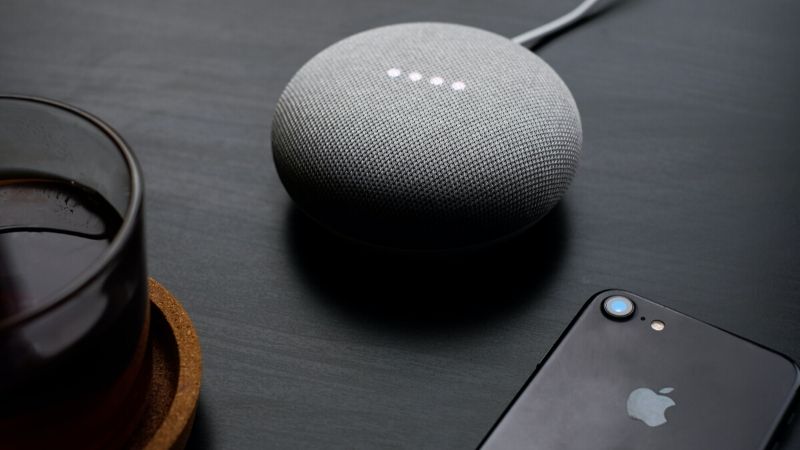
How To Begin Developing A Voice Strategy For Your Music
As more music consumers turn to their smart speakers to search for music via voice command, it’s important for bands and artists to adapt and develop a voice strategy for marketing their music.
Guest post by Randi Zimmerman of the Symphonic Blog
According to Google, more than 50% of people in the U.S. use voice search like Alexa, Siri, Google Home, etc. daily. What’re they using it for the most? Listening to music. As a musician, it’s important to be aware of the shift to come and have a voice strategy ready to go. Here’s how to do it.
How to Start Developing a Voice Strategy for Your Music
Know Your Audience
The goal here is smart content marketing. For example, if your research shows your audience likes podcasts, consider adding podcast-like commentary to your album to keep their interest and give it some extra flair. U2 did a good job of this by creating track-by-track commentary for their albums, in partnership with Amazon, and making it available on Echo devices. The promotion also featured content including new and archived interviews from the band and live recordings of tracks from “Songs of Experience.” Users were able to access it by saying, “Alexa, play the U2 experience” to any Alexa enabled device or app.
- Consider adding behind-the-scenes features to your next album, like including additional tracks where you explain the inspiration behind the lyrics. Knowing what type of content your audience engages with the most will inform you with key insights to use in your voice targeting strategy.
Not sure what they’re into? Spotify for Artists provides detailed analytics about who your listeners are, a breakdown of where people are listening to your music, other artists your fans are listening to and even a live update of people listening to your music in real-time.
Want even faster and more personal results? Create a poll on Instagram Stories or ask questions in your email marketing efforts. You could even ask your fans directly in your next livestream for immediate feedback.
Metadata is key.
Typically, online searches are based on keywords. Alternatively, voice searches respond via conversational language. With this in mind, the only way to make sure your fans can find your music via voice technology is with the help of detailed metadata.
Adapting to this change means streamlining how you apply metadata to your tracks. This means tagging your tracks with all the basic information like artist name, song name, and album name; as well as writers, composers, etc. When you input this information, double check it for accuracy. Check it three times if you can. Skipping over or missing categories limits the extent of where the algorithm can place your music, making it much harder for your fans to discover it more organically no matter which part of the app they may be using.
————
Sharpen your skills…
AFEM and CI Launch Music Metadata Best Practice Guide
9 Things Musicians Should Do During Coronavirus Downtime
Marketing Strategies You Should Know as a Musician
————
Encourage fans to use voice via social media
Realistically, there’s only so much you can do to get your fans to use voice technology on their own. One thing you can do, however, is to encourage it on socials. A great way to do this is to create posts that show you using it yourself.
Here are some examples to get your creative juices flowing:
- Post a clip of you relaxing by the pool and taking out your phone saying, “Hey Alexa, play the song, *your song name* by *your name here*.” as you sit back and sip a margarita.
- If you’ve recently been featured on a popular Apple playlist, promote it on socials! Let your fans know which playlist you’ve been featured on by using voice to pull it up. “Hey Siri, play New Music Daily.” works just fine.
- If you’ve been featured on a hype party playlist, post a video of you heading to a party and pulling out your phone saying, “Hey Google, play *playlist name* on Spotify” (and then jam out in the car).
The options are limitless.
Test it for yourself
Before you start promoting the use of voice to find your music, test it out for yourself first to make sure you’re showing up properly. If your song name is hard for Alexa or Siri to understand, your track may not come up the way you’d like it to, if at all. If you try it for yourself and it’s not working properly, hit up your distributor to try and change it so that it does.
————
Learn more…
Advertising Your Latest Release Online
6 Marketing Strategies To Land On Playlists
Promoting Your Music on SoundCloud vs. YouTube
————
In Conclusion…
By following these guidelines, your voice strategy is one step closer in the right direction. It’s important to take note of technological shifts like these in order to stay ahead of the curve. Voice marketing is an incredibly valuable tool every musician should be taking advantage of. With things like great metadata, engaging social media content, and a great strategy, your fans will be able to connect with you and your music no matter where they are.
Share on:

No comments:
Post a Comment